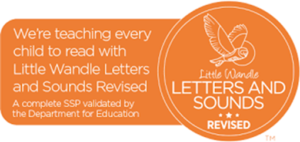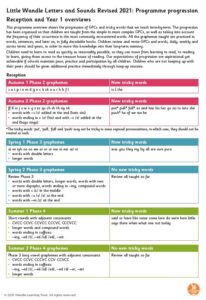Early Reading and Phonics
Reading at Rockcliffe
Your child’s reading experience is much more than the reading book which comes home from school.
Reading is happening all the time in the classroom and in school. It is taught in specific reading and English lessons, but children are practising and using their ‘reading’ constantly across all subjects too.
A child’s ‘reading journey’ begins with ‘learning to read’ and moves on into ‘reading to learn’. This advice will help you to make sense of the latest curriculum and testing changes and understand how reading is taught and developed.
Statutory requirements for teaching reading
All schools have to follow an agreed curriculum in the teaching of reading (and other subjects). At Rockcliffe, we follow the guidelines laid down by the National Curriculum 2014, for England.
Assessment and progress
Assessment for young children is informal and discrete and helps to inform the teacher’s planning so they can support each child in their class. To support the teacher's assessment of how well your child is progressing with his or her reading, there are a number of simple checks or tests:
· A short reception baseline test (introduced in September 2021).
· A phonics check near the end of Year 1 to make sure you child can decode.
· A teacher assessment of reading at the end of Year 2.
Different ways to teach and practise reading
You’ll probably hear about different methods of teaching and practising reading. Here is a little of that terminology explained:
Shared reading: A teacher reads and discusses a text with the whole class, demonstrating how to be a good reader.
Individual reading: Reading 1:1 with an adult or alone as it suggests.
Guided reading: About 6 children, grouped by reading ability, read aloud from the same book in turn, whilst the teacher listens in and draws out teaching points. Older children may read a text away from the group and then focus on particular aspects of understanding during the group discussion.
Sustained reading: Children read by themselves for a short time. At Rockcliffe we aim to set 15 minutes per day aside for quiet, focused reading. We believe that this helps children to become immersed in a book and develop the habit of reading for pleasure.
Story time: The teacher reads a story aloud to the whole class.
Home-School Reading Scheme: The books that the children bring home to practise reading with you.
What does Home-School Reading look like at Rockcliffe?
Like many schools, we use a mixture of well-respected, published reading schemes.
These begin with decodable books; specifically written, using a cumulative structured introduction of phonics, so that children can practise their developing reading skills.
The books we use at Rockcliffe are colour coded so that children choose a book from a similar level. The colours represent different levels of reading difficulty to enable a child to take small but steady steps to reading success. Please note that although the numerical levels shown on books by different publishers may not match, we have taken care to ensure that books of a similar level of challenge are colour banded together.
As children's skills increase so they read more and the need for such control lessens and eventually they will reach reading fluency. This is when children are reading easily with confidence and intonation and at pace. At this point, children will move on to free readers. Free readers are simply real books – These may be chosen from the school library or brought from home.
It is important to remember that Home-School readers are provided for parents to support their child’s reading, but they are not the tool by which teachers teach reading. We do endeavour to change these books on a weekly basis for you and will hear children read from them when time permits. The home-school scheme is dependent on a dedicated team of volunteers – If you have a little spare time to assist with this important weekly task then please let your child’s teacher know.
How can I help my child to read?
Sound it out: If your child gets stuck on a word, try phonics first. Get your child to say the letter sounds and say them quickly to try to hear the word; this is called ‘blending’. If the word can’t be sounded out then it’s best if you say it quickly and move on. If the book is at the right level then this should not happen too much.
Clap and chunk: Clapping out syllables or chunks in words and names can help with reading longer words: Di-no-saur! Cho-co-late! Or point out that some words are made up of two words, so wind and then mill makes windmill.
Try expression and flow: Your child’s expression might sometimes sound stilted on the first reading of a sentence or a page. This is because they are focusing on making sounds into words. To keep your child hooked into the story, read it again with expression – after lots of praise, of course!
Don’t be afraid to back track: It’s sometimes good to get your child to re-read a sentence or even a page if it has been tricky to work out. This helps with meaning, flow and confidence – and we all still have to do this sometimes!
Read, read, read! It’s really important to read as much as possible with your child: Read the books that come home from school; buy books, children’s newspapers and magazines; read signs and notices. Remember, your local library is FREE! Children can borrow 8 books and 8 story CDs for 28 days. To help develop and encourage this habit, all classes visit Whitley Bay Library once each term.
Read together: Hearing a story read to you (rather than watching a story on TV or as a film) is hugely important for developing reading skills, but it’s also a relaxing routine which prepares children for a good night’s sleep. Hearing a story read out loud also means that children can have access to books that may as yet be too challenging to read. Even fluent readers will still enjoy the sharing opportunity if it’s on offer. It’s a great idea to get your older children to read with younger brothers and sisters too.
Read for pleasure: Encourage older children, who can read to themselves, to develop the daily habit of reading for pleasure; we all know that a relaxing way to end the day is lying in bed with a good book! Help them to explore authors and choose books they will enjoy by visiting the library and bookshops and reading reviews online. Reluctant readers may be hooked in by reading picture books for older children, reading shorter novels or listening to audio books (on CDs or iPad/tablet devices).
And finally... do ask us for help and advice! Just like you, we want your child become a fluent reader with a life-long love of books.
Our Early Years Foundation Stage and Key Stage One children use the following schemes:
· Little Wandle Letters and Sounds Phonics Programme
· Collins Big Cat Phonics eBooks (to support Guided Reading with the Little Wandle Programme)
· The Oxford Reading Tree & Treetops for reading as our Home-School Reading Scheme
Little Wandle Letters and Sounds Phonics Programme:
In order to ensure our children become fluent readers and writers, phonics is taught through a systematic and structured phonics programme.
We use the Little Wandle Letters and Sounds Revised to plan and provide daily engaging phonics lessons.
Phonics involves matching the sounds of spoken English with individual letters or groups of letters. For example, the sound k can be spelled as c, k, ck or ch.
Teaching children to blend the sounds of letters together helps them decode unfamiliar or unknown words by sounding them out. For example, when a child is taught the sounds for the letters t, p, a and s, they can start to build up the words: “tap”, “taps”, “pat”, “pats” and “sat”. (The National Literacy Trust)
Our phonics teaching starts in Nursery and follows a very specific sequence that allows our children to build on their previous phonic knowledge and master specific phonic strategies as they move through school. As a result, all our children are able to tackle any unfamiliar words that they might discover. At Rockcliffe, we also model these strategies in shared reading and writing both inside and outside of the phonics lesson and across the curriculum. We have a strong focus on the development of language skills for our children because we know that speaking and listening are crucial skills for reading and writing in all subjects.
The resources on this page will help you support your child with saying their sounds and writing their letters. There are also some useful videos so you can see how they are taught at school and feel confident about supporting their reading at home.
https://www.littlewandlelettersandsounds.org.uk/resources/for-parents/


